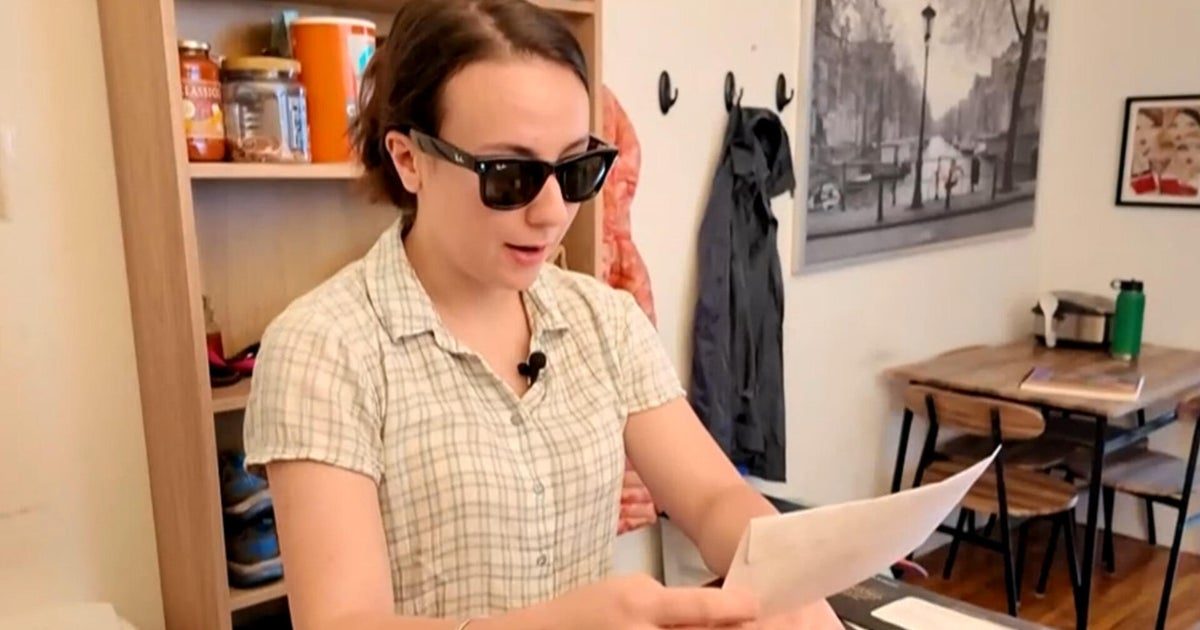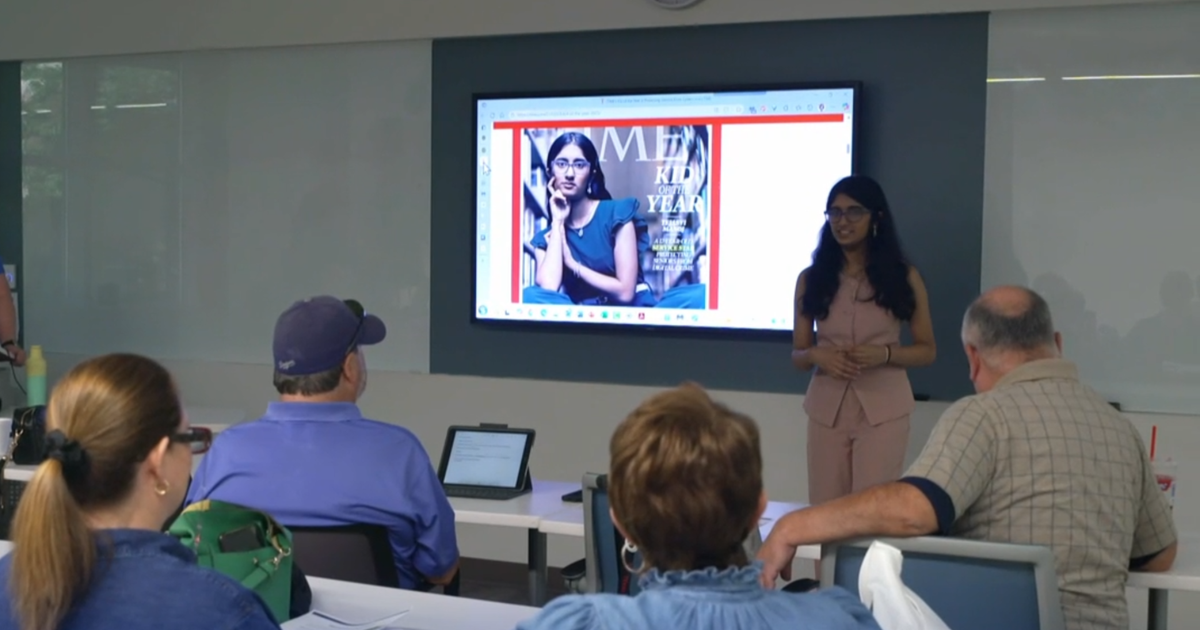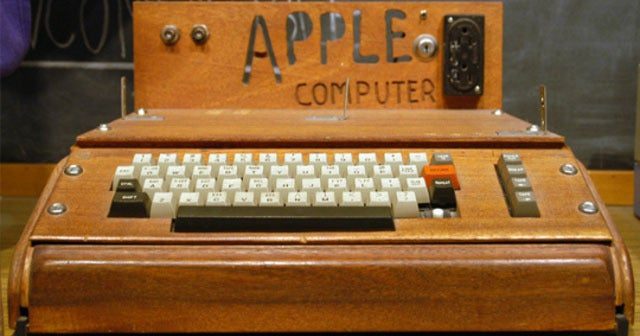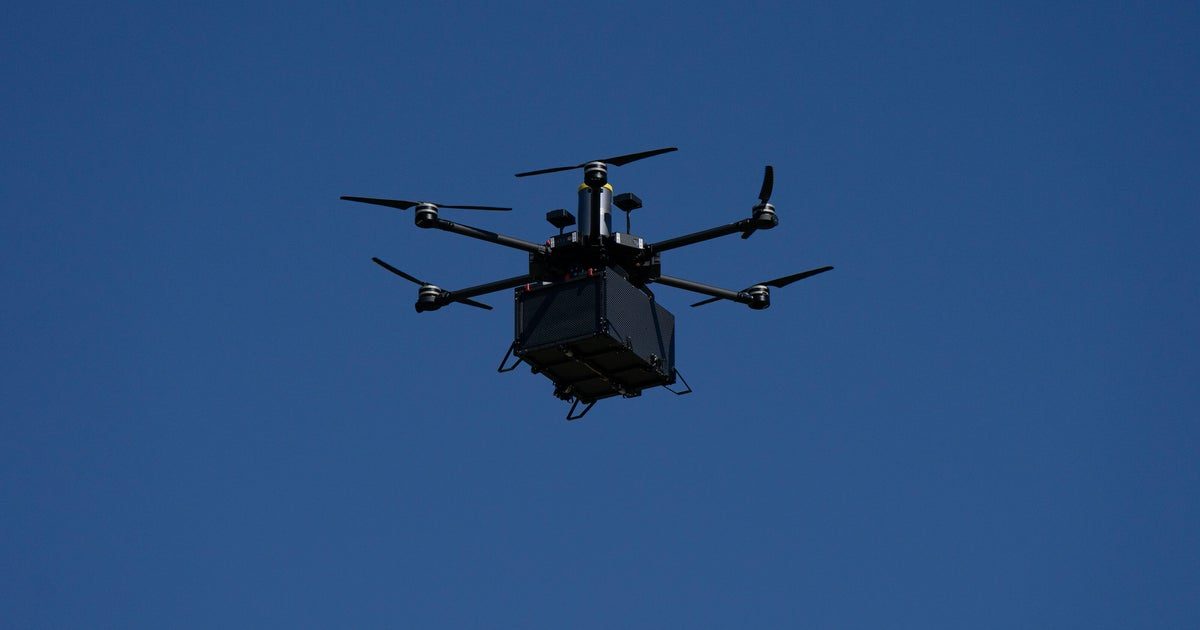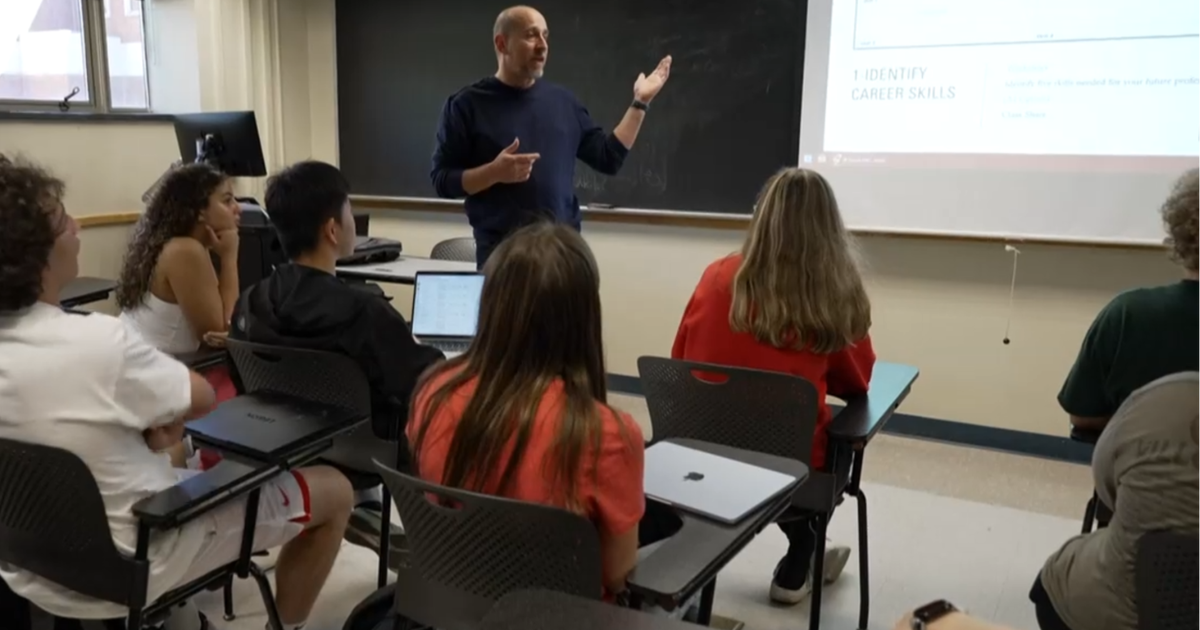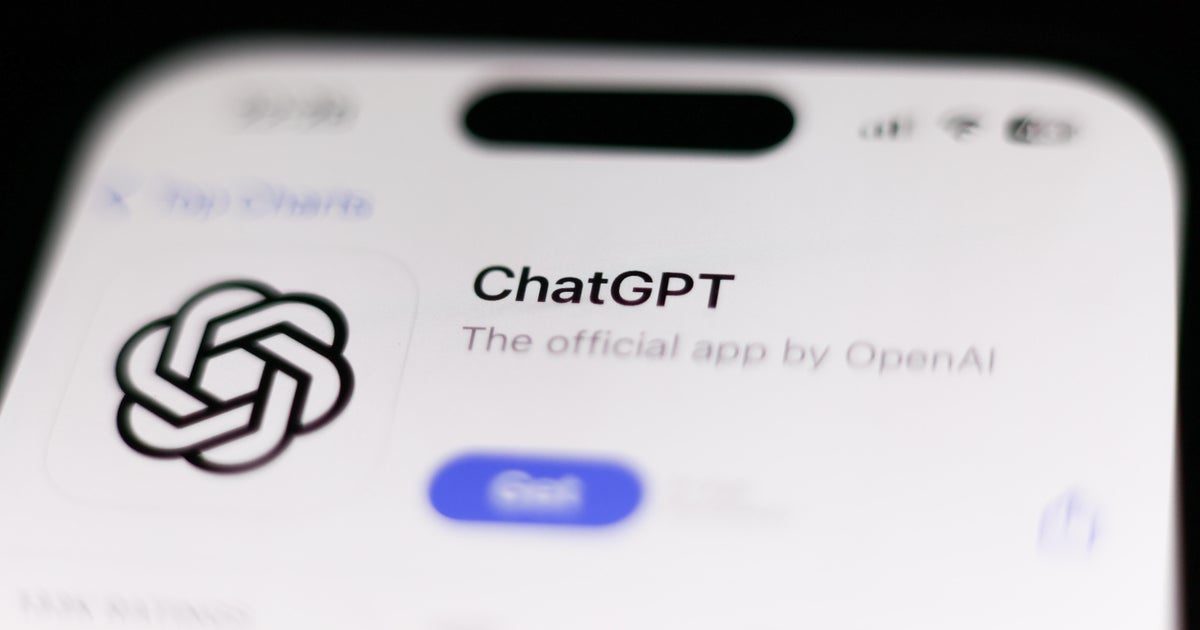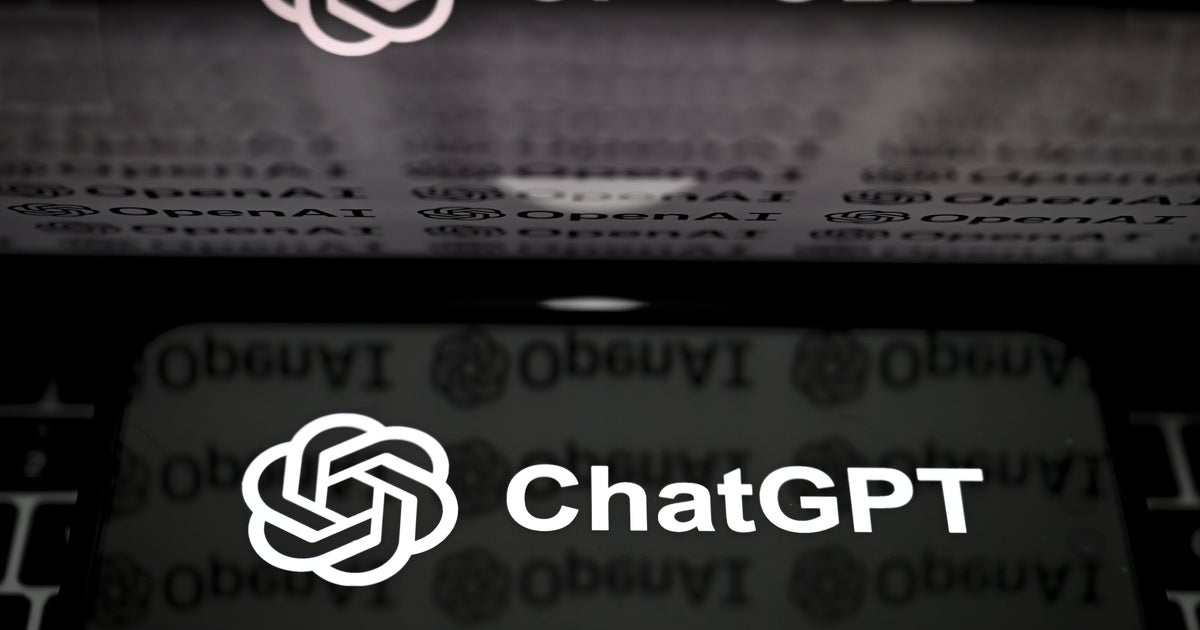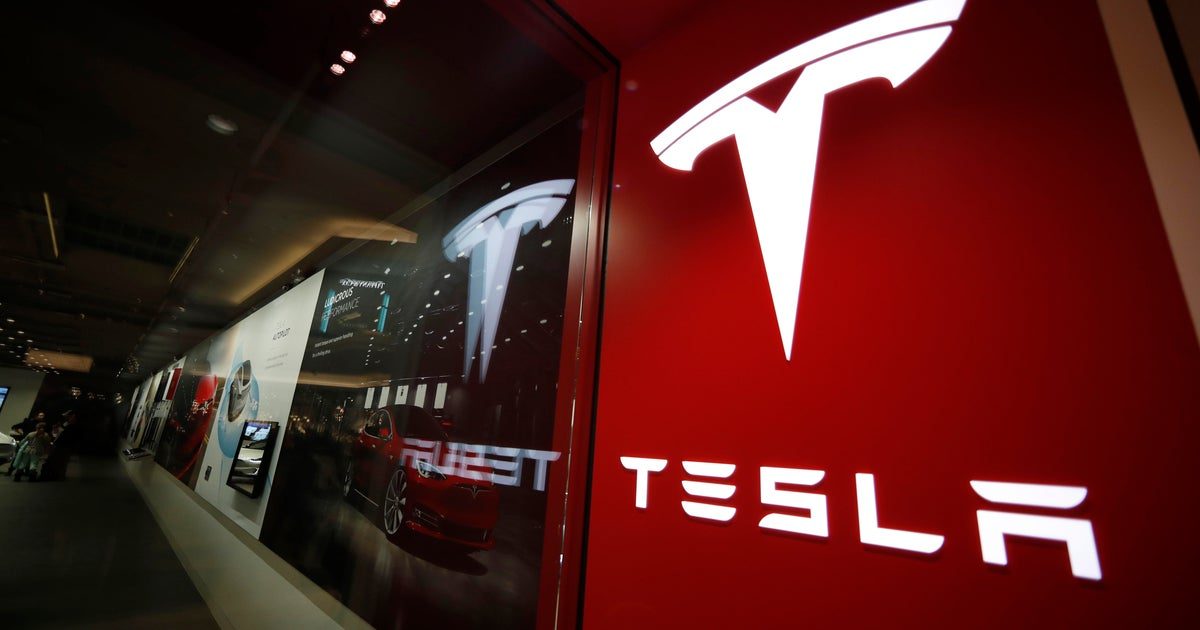Visually-impaired people are finding new independence with AI glasses. “CBS Saturday Morning” meets Emeline Lakrout, an active, visually-impaired New Yorker who has found new ways to use AI glasses to her advantage.
#glasses #foster #independence #visuallyimpaired #people
Featured
Plano, Texas — In many ways, Tejasvi Manoj of Plano, Texas, is an average 17-year-old.
“You’ve got to balance, like, all of your classes, and then you have college applications as well,” Manoj told CBS News.
But she’s spending much of her senior year of high school with a different type of senior, visiting older adult community centers, where she teaches them how to avoid being financially scammed.
Her calling started last year when Manoj’s grandfather was the target of a scam effort in which he received a text message from someone pretending to be a family member, claiming an emergency and asking him to wire $2,000 to a bank account.
Fortunately, Manoj’s grandfather and grandmother contacted family members and discovered the scam before wiring the money.
But the event was alarming to Manoj, who began researching and subsequently building a website and app called Shield Seniors, which shows what online scams look like and how to report them.
In July, she did a TEDx talk. And this week, she made the cover of Time magazine as its “Kid of the Year.”
“So I found out 12 hours before the article released,” Manoj said. “I was in so much shock. It was the greatest surprise of my life, honestly.”
Manoj says her research shows scammers are increasingly using artificial intelligence.
“There are so many people who are using AI to make scams seem more real,” Manoj said.
These frauds are becoming increasingly common. According to the FBI’s Internet Crime Complaint Center, people 60 and over who reported scams in 2024 lost a total of $4.8 billion — double the losses from just five years ago.
“Particularly when you’re older, you feel more vulnerable,” one woman who attended one of Manoj’s classes explained. “I think too, as you get older, you become less, computer savvy.”
Her app, which utilizes AI, allows users to detect potential scam efforts.
“So here I can add, like, a text message,” Manoj explains as she shows her website. “And then I can press ‘please identify whether this is a threat.’ So it’s saying that this request seems suspicious.”
Manoj has taken some computer science courses, but she said she mostly learned everything about coding and AI on YouTube.
“Obviously, my mission is to make sure older adults are aware of cybersecurity,” Manoj said. “And they shouldn’t be embarrassed about asking for help.”
She says her long-term plans involve continuing her work on Shield Seniors, but also finding ways to use “tech for social good.”
Manoj is still looking for funding for her app. She hopes landing the cover of Time will allow her to launch Shield Seniors by the end of the year.
Karen Hua is a CBS News national reporter based in Houston.
#Texas #teen #computer #science #fight #scammers
A deal in the works between the U.S. and China over the ownership of TikTok could include a licensing agreement for the closely guarded secret of the social media company’s algorithm, to which access has proved a major sticking point in negotiations between the countries.
The Chinese government once vowed to block the sale of TikTok’s algorithm, the technology that seems to intuit user preferences almost instantaneously and that has been a driving force for the video-sharing app’s explosive growth in recent years.
Previously, TikTok had also seemed unwilling to budge. In May, when the platform was challenging a 2024 law banning TikTok in the U.S., the company said in a legal filing that “divesting TikTok Inc.’s U.S. business and completely severing it from the globally integrated platform of which it is a part is not commercially, technologically, or legally feasible.”
President Trump this week again pushed back enforcement of the TikTok law, which would require its parent company, Beijing-based ByteDance, to sell its stake in the app or be cut off from the U.S. market. In the meantime, an agreement between the U.S. and China appears to be moving forward. Mr. Trump on Friday said he and Chinese President Xi Jinping have “made progress” in talks over a potential deal to resolve the dispute over TikTok’s ownership.
Although key elements of the framework deal remain unclear, when some details were released earlier this week, Wang Jingtao, deputy director of China’s Central Cyberspace Affairs Commission, told reporters in Madrid that the arrangement included agreement over “the use of intellectual property rights,” according the Associated Press.
William Akoto, an assistant professor at American University, thinks ByteDance executives may be urging the Chinese government to strike a deal so the company can continue earning revenue from the algorithm, while maintaining a foothold in the U.S.
ByteDance and TikTok did not respond to requests for comment.
How would a TikTok licensing deal work?
Mr. Trump, asked Thursday about what will happen with TikTok’s algorithm, said, “TikTok has tremendous value. The United States has that value in its hand since we’re the ones that have to approve it.”
Chinese law prohibits the export of TikTok’s proprietary algorithm, including to the U.S., without government approval, according to experts. So exactly how a licensing deal would work remains unclear, including whether ByteDance could maintain any sort of outside control over TikTok’s algorithm once ownership transfers to U.S. owners.
“What I understand is they would give a U.S. entity legal permission to use it under certain terms,” said Sarah Kreps, a nonresident senior fellow at the Brookings Institute, a nonpartisan policy research organization. “So it would be like they’re renting the algorithm rather than selling it.”
Kreps added that in retaining a measure of ownership over the algorithm, ByteDance could have the right to access internal TikTok metrics and influence how content is ranked in the U.S., akin to how a software vendor can patch or upgrade licensed software.
The Wall Street Journal, citing people familiar with the matter, said this week that TikTok would create a new U.S. app and that the company’s engineers would re-create content-recommendation algorithms using technology licensed from ByteDance.
A White House spokesperson declined to comment on the contours of the U.S.-China framework deal over TikTok. “Any details of the TikTok framework are pure speculation unless they are announced by this administration,” the spokesperson said.
What makes TikTok’s algorithm special?
Algorithms are complex data systems that act as recommendation engines, ranking the content users ultimately see in their feeds. They also help companies gather information about their customers in order to serve them targeted advertisements, a key source of revenue.
Like other social media players, TikTok’s algorithm delivers content to users based on their interests and interactions on the platform. Lauryn Williams, a deputy director and senior fellow focused on technology at the Center for Strategic and International Studies, described the algorithm as TikTok’s “secret sauce.”
Kreps highlights the algorithm’s ability to quickly pick up on user behavior, interests and preferences. “There’s something about it that is so well-tailored to what they understand people to want that it gets them on the platform and keeps them there in ways that don’t seem to be the case with other platforms,” she said.
In its own explanation of how it recommends videos, TikTok says it considers a range of factors, such as how long someone stays on a video and personal user information, such as someone’s language preference or country of origin. The algorithm then “selects from a large collection of eligible content and ranks them based on the system’s prediction of how likely you’ll be interested in each one.”
A Supreme Court ruling from January upholding the TikTok ban notes that each interaction a user has on TikTok — whether watching a video, following an account or leaving a comment — enables the recommendation system to “further tailor a personalized content feed.”
National security concerns
In Madrid, U.S. Trade Representative Jamieson Greer said on Monday that “we want to ensure that the Chinese have a fair, invested environment in the United States, but always that U.S. national security comes first,” according to CNN.
But while a deal between the U.S. and China could address the ownership dispute, it might not resolve all of the national security concerns that led Congress to pass the TikTok ban with bipartisan support in April of 2024, experts told CBS MoneyWatch.
The Justice Department last year accused TikTok of collecting sensitive data about U.S. users, warning that the Chinese government could use the information to manipulate the content that people see. It also said TikTok employees were able to communicate directly with ByteDance engineers in China via an internal messaging system called Lark.
In 2022, TikTok acknowledged in a letter to U.S. senators that China-based employees could have access to American users’ data in certain circumstances and said it was taking steps to strengthen data security.
In its decision to uphold the TikTok ban in January, the Supreme Court also noted that China can require TikTok’s parent company “to cooperate with [its] efforts to obtain personal data,” and that “there is little to stop all that information from ending up in the hands of a designated foreign adversary.”
To minimize any national security concerns, Akoto, the American University assistant professor, said the new arrangement would have to ensure that the app’s China-based engineers are unable to access the U.S. version of Tiktok. If the algorithm sends user data back to China or if the algorithm can be updated outside of the U.S, that could leave American users’ data vulnerable, he said.
When Jingtao, the deputy director of China’s Central Cyberspace Affairs Commission, spoke to the press earlier this week, he indicated the U.S. and China have agreed on entrusting a partner with handling U.S. user data and content security, although its unclear how exactly that would work.
Mary Cunningham is a reporter for CBS MoneyWatch. Before joining the business and finance vertical, she worked at “60 Minutes,” CBSNews.com and CBS News 24/7 as part of the CBS News Associate Program.
#TikToks #fate #U.S #hinge #controls #algorithm
Flickr/Ed Uthman
Steve Jobs and Steve Wozniak launched the very first Apple computer in April of 1976.
1977 – Apple II
Flickr/Marcin Wichary
From a wooden computer box to a glass smartphone, Apple has pushed the boundaries of technology.
1978 – Disk II
All About Apple Museum
From a wooden computer box to a glass smartphone, Apple has pushed the boundaries of technology.
1979 – Apple II Plus
Wikimedia Commons
From a wooden computer box to a glass smartphone, Apple has pushed the boundaries of technology.
1980 – Apple III
Alexander Shaelss
From a wooden computer box to a glass smartphone, Apple has pushed the boundaries of technology.
1983 – Lisa
Wikimedia Commons
From a wooden computer box to a glass smartphone, Apple has pushed the boundaries of technology.
1983 – Apple Mouse
Flickr/moparx
The first computer to use a mouse was the Apple Lisa in 1983.
1984 – Apple IIC
Wikimedia Commons
From a wooden computer box to a glass smartphone, Apple has pushed the boundaries of technology.
1984 – Macintosh
All About Apple Museum
The first Macintosh was introduced in 1984.
1985 – Macintosh XL
Hannes Kuballa
From a wooden computer box to a glass smartphone, Apple has pushed the boundaries of technology.
1986 – Macintosh Plus
Wikimedia Commons
From a wooden computer box to a glass smartphone, Apple has pushed the boundaries of technology.
1987 – Macintosh SE
Wikimedia Commons
From a wooden computer box to a glass smartphone, Apple has pushed the boundaries of technology.
1987 – Apple Newton next to an iPhone
Blake Patterson
The Newton was the precursor to mobile devices like the iPhone and iPad.
1988 – Apple IIc Plus
Wikimedia Commons
From a wooden computer box to a glass smartphone, Apple has pushed the boundaries of technology.
1988 – Macintosh IIx
Wikimedia Commons
From a wooden computer box to a glass smartphone, Apple has pushed the boundaries of technology.
1989 – Macintosh SE/30
Wikimedia Commons
From a wooden computer box to a glass smartphone, Apple has pushed the boundaries of technology.
1989 – Macintosh portable
Wikimedia Commons
The first portable Apple computer was used to send an email from space in 1991 on the Space Shuttle mission STS-43.
1990 – Macintosh IIfx
All About Apple Museum
From a wooden computer box to a glass smartphone, Apple has pushed the boundaries of technology.
1991 – Macintosh PowerBook 140
Wikimedia Commons
From a wooden computer box to a glass smartphone, Apple has pushed the boundaries of technology.
1993 – Macintosh LC 575
Matthew Paul Argall
From a wooden computer box to a glass smartphone, Apple has pushed the boundaries of technology.
1995 – PowerBook 5300
Wikimedia Commons
From a wooden computer box to a glass smartphone, Apple has pushed the boundaries of technology.
1996 – Power Macintosh 7220
Wikimedia Commons
From a wooden computer box to a glass smartphone, Apple has pushed the boundaries of technology.
1997 – 20th Anniversary Macintosh
All About Apple Museum
From a wooden computer box to a glass smartphone, Apple has pushed the boundaries of technology.
1998 – iMac G3
Apple
The first iMac came in bright colors and a round body.
1999 – Power Macintosh G3
Dietmar Naujok
From a wooden computer box to a glass smartphone, Apple has pushed the boundaries of technology.
1999 – iBook
Jared Benedict
From a wooden computer box to a glass smartphone, Apple has pushed the boundaries of technology.
2000 – Power Mac 4G Cube
Wikimedia Commons
From a wooden computer box to a glass smartphone, Apple has pushed the boundaries of technology.
2001 – the first iPod
Apple
The first music player to go all digital.
2001 – PowerBook G4
Jared Benedict
From a wooden computer box to a glass smartphone, Apple has pushed the boundaries of technology.
2002 – iMac G4
Benjamin Thompson
From a wooden computer box to a glass smartphone, Apple has pushed the boundaries of technology.
2003 – iBook G4
Akira Kamikura
From a wooden computer box to a glass smartphone, Apple has pushed the boundaries of technology.
2003 – PowerMac G5
CNET
From a wooden computer box to a glass smartphone, Apple has pushed the boundaries of technology.
2004 – iMac G5
Matthew Welty
From a wooden computer box to a glass smartphone, Apple has pushed the boundaries of technology.
2004 – iPod mini
Apple
The iPod mini only lasted one year and was discontinued in 2005.
2005 – iPod nano
Apple
From a wooden computer box to a glass smartphone, Apple has pushed the boundaries of technology.
2005 – iPod shuffle
Apple
From a wooden computer box to a glass smartphone, Apple has pushed the boundaries of technology.
2005 – Mac Mini
CNET
From a wooden computer box to a glass smartphone, Apple has pushed the boundaries of technology.
2006 – MacBook Pro
UE-home.net
From a wooden computer box to a glass smartphone, Apple has pushed the boundaries of technology.
2007 – the first iPhone
Apple
The first of its kind, iPhone is widely considered to be a game changer for hand-held devices.
2007 – iMac
CNET
From a wooden computer box to a glass smartphone, Apple has pushed the boundaries of technology.
2007 – Apple TV
David Kid
From a wooden computer box to a glass smartphone, Apple has pushed the boundaries of technology.
2007 – iPod Touch
Apple
From a wooden computer box to a glass smartphone, Apple has pushed the boundaries of technology.
2008 – MacBook Air
CNET
The MacBook Air was the thinnest computer of its time.
2010 – iPad
Apple
Not since the Newton had Apple released a tablet. The iPad was a great success and continues to dominate the tablet market.
2010 – iPhone 4
Apple
From a wooden computer box to a glass smartphone, Apple has pushed the boundaries of technology.
2012 – Macbook Pro with Retina Display
CNET
Apple unveiled its next generation MacBook Pro with Retina Display at the Worldwide Developers Conference (WWDC) on June 11, 2012. One of the most highlighted features is new the MacBook Pro’s 2,880 x 1,800 Retina Display. The previous 15-inch MacBook Pro had a 1,440 x 900 display resolution. Retina Display is defined by Apple as having a “pixel density so high your eye is unable to distinguish individual pixels.” It weighs 4.46 pounds and is 0.71 inches thick.
2012 – iPhone 5
Apple
Apple unveiled the iPhone 5 on Sept. 12, 2012 in San Francisco. The new smartphone features a 4-inch display, 4G LTE, 1080p HD video quality, 720p HD front-facing video, panoramic photos, a new Lightening connector and EarPods. It was the first time the the smartphone changed its size since it was originally introduced in 2007.
2013 – iPhone 5s, iPhone 5c
Apple
Introduced in 2013, the colorful, lower priced iPhone 5c did not prove as popular as Apple’s iPhone 5s.
2014 – Apple Pay
Justin Sullivan/Getty Images
Apple CEO Tim Cook speaks about Apple Pay during an Apple special event at the Flint Center for the Performing Arts on September 9, 2014 in Cupertino, California. Apple unveiled the Apple Watch wearable tech and two new iPhones, the iPhone 6 and iPhone 6 Plus.
2014 – iPhone 6 & iPhone 6 Plus
Justin Sullivan/Getty Images
Apple Senior Vice President of Worldwide Marketing Phil Schiller talks about the iPhone on stage at the Flint Center for the Performing Arts in Cupertino, Calif., September 9, 2014. Apple unveiled the two new iPhones, the iPhone 6 and iPhone 6 Plus.
2014 – iPhone 6
Justin Sullivan/Getty Images
A member of the media inspects the new iPhone 6 during an Apple special event at the Flint Center for the Performing Arts on September 9, 2014 in Cupertino, California.
2014 – Apple Watch
Justin Sullivan/Getty Images
The Apple Watch was first introduced during an Apple special event at the Flint Center for the Performing Arts on September 9, 2014 in Cupertino, California. But the devices didn’t actually hit the market until the following spring.
2015 – Apple Watch
Apple
The Apple Watch went on sale to the public in April 2015, available in two sizes and a range of styles and finishes including 18K gold.
2015 – iPhone 6s, iPhone 6s Plus
Eric Risberg/AP
Phil Schiller, Apple’s senior vice president of worldwide marketing, talks about the features of the new iPhone 6s and iPhone 6s Plus during the Apple event at the Bill Graham Civic Auditorium in San Francisco, September 9, 2015.
2015 – iPad Pro
Beck Diefenbach/Reuters
Apple’s largest tablet yet, the iPad Pro with a 12.9-inch screen and smart keyboard, is seen during an Apple media event in San Francisco, September 9, 2015.
2015 – iPhone 6s Plus
REUTERS/Robert Galbraith
A customer shows off a newly purchased iPhone 6s Plus at the Apple Store in Palo Alto, California September 25, 2015.
2015 – Apple Store robot
REUTERS/David Gray
A man talks to Lucy Kelly on a screen attached to a “telepresence robot,” which she used to purchase her iPhone 6s during the official launch at the Apple Store in central Sydney, Australia, September 25, 2015.
2016 – iPhone SE
Justin Sullivan/Getty Images
Apple VP Greg Joswiak announces the new iPhone SE at Apple headquarters in Cupertino, California on March 21, 2016. The phone features a smaller, 4-inch screen but most of the same features and power of the larger iPhone 6s.
2016 – iPad Pro
Justin Sullivan/Getty Images
Apple CEO Tim Cook shows off a new 9.7-inch iPad Pro at Apple headquarters in Cupertino, California on March 21, 2016.
2016 – iPhone 7 Plus
REUTERS
The iPhone 7 and 7 Plus debuted in September 2016.
2016 – iPhone 7 Plus
Beck Diefenbach/REUTERS
Apple VP Phil Schiller introduces new photography features, including a depth of field and bokeh effects, in the iPhone 7 Plus at Apple’s media event on September 7, 2016.
2016 – MacBook Pro
REUTERS/Beck Diefenbach
A new MacBook Pro, with the Touch Bar across the top, pictured at an Apple media event in Cupertino, California, October 27, 2016.
The Touch Bar lights up and reveals a shifting menu of buttons, tools, and, of course, emoji options that change depending on which app you’re using at any given time.
2017 – PRODUCT(RED) iPhone
Apple
In March 2017 Apple unveiled a special edition iPhone 7 and iPhone 7 Plus in collaboration with PRODUCT(RED), a nonprofit that works to combat HIV and AIDS in Africa.
2017 – Apple iPhone X
Marcio Jose Sanchez / AP
The new $999 iPhone X with Face ID racial recognition technology was introduced on Sept. 12, 2017, in Cupertino, Calif.
2017 – iPhone 8
Stephen Lam / REUTERS
Apple Senior Vice President of Worldwide Marketing Phil Schiller introduces the iPhone 8 in Cupertino, California, Sept. 12, 2017.
2017 – Apple Watch Series 3
Justin Sullivan / Getty Images
Apple CEO Tim Cook talks about the new Apple Watch Series 3, which features cellular connectivity, at the Steve Jobs Theater on the Apple Park campus in Cupertino, California, on Sept. 12, 2017.
Chenda Ngak is the science and technology editor at CBSNews.com.
#evolution #Apple #products
Nvidia, the world’s leading chipmaker, announced on Thursday that it’s investing $5 billion in Intel and will collaborate with the struggling semiconductor company.
The two companies will team up to work on custom data centers that form the backbone of artificial intelligence infrastructure as well as personal computer products, Nvidia said in a press release.
Nvidia said it will spend $5 billion to buy Intel common stock at $23.28 a share. The investment, which is subject to regulatory approvals, comes a month after the U.S. government took a 10% stake in Intel.
“This historic collaboration tightly couples NVIDIA’s AI and accelerated computing stack with Intel’s CPUs and the vast x86 ecosystem — a fusion of two world-class platforms,” Nvidia CEO Jensen Huang said. “Together, we will expand our ecosystems and lay the foundation for the next era of computing.”
The two companies said they will work on “seamlessly connecting” their architectures.
In morning trading, Intel shares jumped 25%, its biggest one-day percentage gain in decades. Nvidia shares added 2%.
For data centers, Intel will make custom chips that Nvidia will use in its AI infrastructure platforms. While for PC products, Intel will build chips that integrate Nvidia technology.
The agreement provides a lifeline for Intel, which was a Silicon Valley pioneer that enjoyed decades of growth as its processors powered the personal computer boom, but fell into a slump after missing the shift to the mobile computing era unleashed by the iPhone’s 2007 debut.
Intel fell even farther behind in recent years amid the artificial intelligence boom that’s propelled Nvidia into the world’s most valuable company. Intel lost nearly $19 billion last year and another $3.7 billion in the first six months of this year, and expects to slash its workforce by a quarter by the end of 2025.
The U.S. government stepped in last month to secure a 10% stake, making it one of Intel’s biggest shareholders. Federal officials said they invested in Intel in order to bolster U.S. technology and domestic manufacturing.
The deal is “bullish for U.S. tech,” Wedbush Securities analyst Daniel Ives said in a client note.
“This is a game-changer deal for Intel as it now brings them front and center into the AI game,” Ives said. “Along with the recent U.S. government investment for 10% (equity stake in Intel) this has been a golden few weeks for Intel after years of pain and frustration for investors.”
Nvidia, meanwhile, has soared because its specialized chips are underpinning the artificial intelligence boom. The chips, known as graphics processing units, or GPUs, are highly effective at developing powerful AI systems.
The deal between the two chipmakers comes as China moves to be less dependent on U.S. semiconductor technology. This week, Chinese officials reportedly forbade several large domestic technology companies from purchasing Nvidia chips, and Huawei announced that it was expanding its development of AI chips and manufacturing.
While Nvidia and Intel will work together to develop new chips, a manufacturing deal has yet to be struck between the two. The potential access to Intel’s chip foundries by Nvidia poses a risk to Taiwan Semiconductor Manufacturing Company, which currently manufactures the tech giant’s flagship processors.
#Nvidia #announces #billion #investment #Intel #collaboration
Your next Uber Eats order could get delivered to you via drone.
Uber Technologies announced Thursday it is partnering with Flytrex, an autonomous drone delivery system, to fly food deliveries to its customers. The company said it would roll out the service in U.S. Uber Eats pilot markets by the end of the year.
“Uber aims to build the world’s most flexible, multimodal delivery network — expanding beyond cars, bikes and couriers to sidewalk robots and now autonomous aerial delivery,” Uber said in its statement.
The company, known for its ride-sharing services, said it would also invest in Flytrex to “to accelerate the development and deployment of drone delivery technology” without specifying the size of the investment.
Flytrex drones have flown over 200,000 meals to suburban households in the past three years, according to Uber. It is one of four companies authorized by the Federal Aviation Administration to conduct “Beyond Visual Line of Sight” operations, which is when a pilot cannot see the aircraft with the naked eye.
Uber did not immediately respond to CBS MoneyWatch’s comment seeking information on where the service will be piloted and how deliveries will work.
The announcement marks another advancement for Uber, which in May started delivering food via sidewalk robots in Los Angeles. Last week, the company announced plans to let customers book helicopter rides through its ride-sharing app.
Reached for comment on where the drone delivery service will be piloted and how deliveries will work, Uber pointed to its “existing robotic delivery partnerships,” as precedent, saying that “there is no consumer price difference between when an AV is dispatched or a courier.”
Added the company, “There are no additional details to share at this time.”
Uber shares have climbed more than 50% since the start of the year.
Drones enter mainstream
Other companies have also waded into drone delivery as the technology becomes more mainstream.
DoorDash, one of Uber Eats’ competitors, announced a partnership with Flytrex in June to deliver food in the Dallas-Fort Worth area.
Chipotle is also piloting drone technology in the Texas city. Last month it said it would fly food to customers in Dallas through a partnership with Zipline, which also has FAA approval for commercial drone deliveries.
Mary Cunningham is a reporter for CBS MoneyWatch. Before joining the business and finance vertical, she worked at “60 Minutes,” CBSNews.com and CBS News 24/7 as part of the CBS News Associate Program.
#Uber #pilot #food #delivery #drone #partnership #Flytrex
Ohio State University launches initiative requiring that students study AI
Columbus, Ohio — College freshmen Ashlee Croll and Brooklyn Baldwin are part of something new this fall at Ohio State University that will infuse artificial intelligence lessons into every major.
“As a bio major, you have to take a lot of hard science classes, math classes,” Croll told CBS News. “So, there’s going to be struggles along the way that, you know, I’m not going to be able to access a tutor all the time. So I think AI will be a little helpful in that.”
The goal of the initiative, AI Fluency, is that students, beginning with the class of 2029, will graduate and be fluent in both their major and AI.
“I hope that they learn how to use it effectively for, you know, brainstorming, for organizing thoughts, but they don’t replace, sort of, their critical thought with it,” said Kevin Richards, an assistant language professor at OSU.
Beginning this year, all freshmen are required to take a course in generative AI and multiple workshops aimed at real-world applications to help them master the technology.
In the last decade, the number of job listings asking for AI skills has soared by 619% in the United States, according to a recent analysis from the Brookings Institution, a Washington, D.C.-based think tank. In the last year alone, the number of AI-themed job postings has increased by 103%, Brookings found.
“It’s a thing that really helps you do your job better,” Luis von Ahn, CEO of Duolingo, the popular app that teaches foreign languages, told CBS News. “…Having something in your resume that says something about AI would give you an advantage, because a lot of our work is being done this way.”
Von Ahn says AI hasn’t replaced any full-time positions at Duolingo. However, he explains that it took the company more than a decade to create its first 100 courses. By using AI, it has created nearly 150 new ones in the last year alone.
“It allows us to go faster and it allows us to create, you know, high-quality content just at a much higher pace,” von Ahn said.
Many Americans remain skeptical of AI. In a new survey of U.S. adults released by the Pew Research Center on Wednesday, 53% of respondents said they believed that AI will worsen people’s ability to think creatively.
OSU is hoping that threading AI into its curriculum will help its students’ resumes stand out. Baldwin is tentatively optimistic it will give her an advantage when she enters the workforce.
“There’s a lot I didn’t know about before taking this class,” Baldwin said. “And if there’s other college students that haven’t been offered a class like this, and haven’t been told about these new AI tools, then maybe have a leg up in that sense.”
Meg Oliver is a correspondent for CBS News based in New York City. Oliver is a veteran journalist with more than two decades of reporting and anchoring experience.
#Ohio #State #University #launches #initiative #requiring #students #study
OpenAI says it is rolling out new safety measures for ChatGPT users under 18
OpenAI announced Tuesday that it is directing teens to an age-appropriate version of its ChatGPT technology as it seeks to bolster safeguards amid a period of heightened scrutiny over the chatbot’s safety.
Users of the chatbot identified as under the age of 18 will automatically be directed to a version of ChatGPT governed by “age-appropriate” content rules, OpenAI said in a statement. This under-age edition includes protection policies such as blocking sexual content and — “in rare cases of acute distress” — law enforcement to ensure a user’s safety, according to the company.
“The way ChatGPT responds to a 15-year-old should look different than the way it responds to an adult,” the company said in the announcement.
OpenAI also said it is introducing parental controls, such as enabling parents to link their account to their teen’s account, manage chat history, set blackout hours and more. The safeguards will be available by the end of September.
The announcement comes just days after the Federal Trade Commission (FTC) launched a probe into the potential negative effects of AI chatbot companions on children and teens. OpenAI said that it’s prioritizing “making ChatGPT helpful and safe for everyone, and we know safety matters above all else when young people are involved.
A spokesperson for OpenAI recently told CBS News that it’s prioritizing “making ChatGPT helpful and safe for everyone.”
Before the FTC probe, OpenAI indicated that it would introduce extra safety protections for vulnerable users and teens, after the parents of 16-year-old Adam Raine of California, who died by suicide in April, sued the company late last month. Raine’s family allege that ChatGPT led their teen to commit suicide.
It’s unclear how OpenAI plans to indentify users’ ages, however, it stated that if ChatGPT is unsure about someone’s age, or has incomplete information, it will default to the under-18 version.
OpenAI did not immediately respond to CBS MoneyWatch’s request for comment.
Other tech companies have taken similar steps to shield teen users from inappropriate content. YouTube, for example, announced a new age-estimation technology that will track the types of videos users watch and how long they’ve had their account to verify if they are under the age of 18.
According to an April Pew Research Center report, parents are generally more worried about the mental health of teenagers than are teens themselves. Among those parents who are at least somewhat concerned about teen mental health, 44% said social media had the biggest negative impact on adolescents.
Mary Cunningham is a reporter for CBS MoneyWatch. Before joining the business and finance vertical, she worked at “60 Minutes,” CBSNews.com and CBS News 24/7 as part of the CBS News Associate Program.
#OpenAI #rolling #safety #measures #ChatGPT #users
Their teens died by suicide after AI chatbot interactions. Now the parents are testifying to Congress.
The parents of teenagers who killed themselves after interactions with artificial intelligence chatbots testified to Congress on Tuesday about the dangers of the technology.
Matthew Raine, the father of 16-year-old Adam Raine of California, and Megan Garcia, the mother of 14-year-old Sewell Setzer III of Florida, were slated to speak at a Senate hearing on the harms posed by AI chatbots.
Raine’s family sued OpenAI and its CEO, Sam Altman, last month, alleging that ChatGPT coached the boy in planning to take his own life in April. ChatGPT mentioned suicide 1,275 times to Raine, the lawsuit alleges, and kept providing specific methods to the teen on how to die by suicide. Instead of directing the 16-year-old to get professional help or speak to trusted loved ones, it continued to validate and encourage Raine’s feelings, the lawsuit alleges.
Garcia sued another AI company, Character Technologies, for wrongful death last year, arguing that before his suicide, Sewell had become increasingly isolated from his real life as he engaged in highly sexualized conversations with the chatbot.
His mother told CBS News last year that her son withdrew socially and stopped wanting to play sports after he started speaking to an AI chatbot. The company said after the teen’s death, it made changes that require users to be 13 or older to create an account and that it would launch parental controls in the first quarter of 2025. Those controls were rolled out in March.
In this undated photo provided by Megan Garcia of Florida in Oct. 2024, she stands with her son, Sewell Setzer III. Courtesy Megan Garcia via AP 
Hours before the Senate hearing, OpenAI pledged to roll out new safeguards for teens, including efforts to detect whether ChatGPT users are under 18 and controls that enable parents to set “blackout hours” when a teen can’t use ChatGPT. The company said it will attempt to contact the users’ parents if an under-18 user is having suicidal ideation and, if unable to reach them, will contact the authorities in case of imminent harm.
“We believe minors need significant protection,” OpenAI CEO Sam Altman said in a statement outlining the proposed changes.
Child advocacy groups criticized the announcement as not enough.
“This is a fairly common tactic — it’s one that Meta uses all the time — which is to make a big, splashy announcement right on the eve of a hearing which promises to be damaging to the company,” said Josh Golin, executive director of Fairplay, a group advocating for children’s online safety.
“What they should be doing is not targeting ChatGPT to minors until they can prove that it’s safe for them,” Golin said. “We shouldn’t allow companies, just because they have tremendous resources, to perform uncontrolled experiments on kids when the implications for their development can be so vast and far-reaching.”
California State Senator Steve Padilla, who introduced legislation to create safeguards in the state around AI Chatbots, said in a statement to CBS News, “We need to create common-sense safeguards that rein in the worst impulses of this emerging technology that even the tech industry doesn’t fully understand.”
He added that technology companies can lead the world in innovation, but it shouldn’t come at the expense of “our children’s health.”
The Federal Trade Commission said last week it had launched an inquiry into several companies about the potential harms to children and teenagers who use their AI chatbots as companions.
The agency sent letters to Character, Meta and OpenAI, as well as to Google, Snap and xAI.
How to seek help
If you or someone you know is in emotional distress or a suicidal crisis, you can reach the 988 Suicide & Crisis Lifeline by calling or texting 988. You can also chat with the 988 Suicide & Crisis Lifeline here. For more information about mental health care resources and support, The National Alliance on Mental Illness (NAMI) HelpLine can be reached Monday through Friday, 10 a.m.-10 p.m. ET, at 1-800-950-NAMI (6264) or email info@nami.org.
Cara Tabachnick
contributed to this report.
#teens #died #suicide #chatbot #interactions #parents #testifying #Congress
Tesla faces federal safety probe over reports of faulty door handles on some Model Y vehicles
The National Highway Traffic Safety Administration is looking into reports that faulty electronic door handles on 2021 Tesla Model Y SUVs prevented owners from entering and exiting the vehicles, according to filing on the regulator’s website. In several cases, parents describe situations in which they were unable to access children inside the car.
The Office of Defects Investigation (ODI) received nine reports on “inoperable door handles,” with the most commonly reported issues involving parents’ inability to reenter the car after placing their child in the back seat before going on a drive, or to remove their child from the back seat at the end of a drive.
Some Tesla owners reported having to break a vehicle’s window to regain entry, the NHTSA documents state. (NHTSA’s number for the preliminary examination is PE25010 and can be viewed here.)
“Entrapment in a vehicle is particularly concerning in emergency situations, such as when children are entrapped in a hot vehicle. For awareness, NHTSA has a Child Heatstroke Campaign that highlights the dangers to children entrapped in hot vehicles,” the agency states.
While Tesla vehicles have internal manual door releases, they cannot be operated by small children, according to the safety watchdog.
According to the regulator’s preliminary review, the handles on some Model Y vehicles appear to become inoperable “when the electronic door locks receive insufficient voltage from the vehicle.” However, no warnings prior to the exterior door handle failures — such as a low voltage battery warning — have been reported by owners, according to NHTSA.
The investigation involves 174,290 Tesla Model Y SUVs from model year 2021 and is focused on the functionality of the electronic door locks from outside of the vehicle. The agency said it “will continue to monitor any reports of entrapment involving opening doors from inside of the vehicle, and ODI will take further action as needed.”
Anne Marie D. Lee is an editor for CBS MoneyWatch. She writes about topics including personal finance, the workplace, travel and social media.
#Tesla #faces #federal #safety #probe #reports #faulty #door #handles #Model #vehicles

